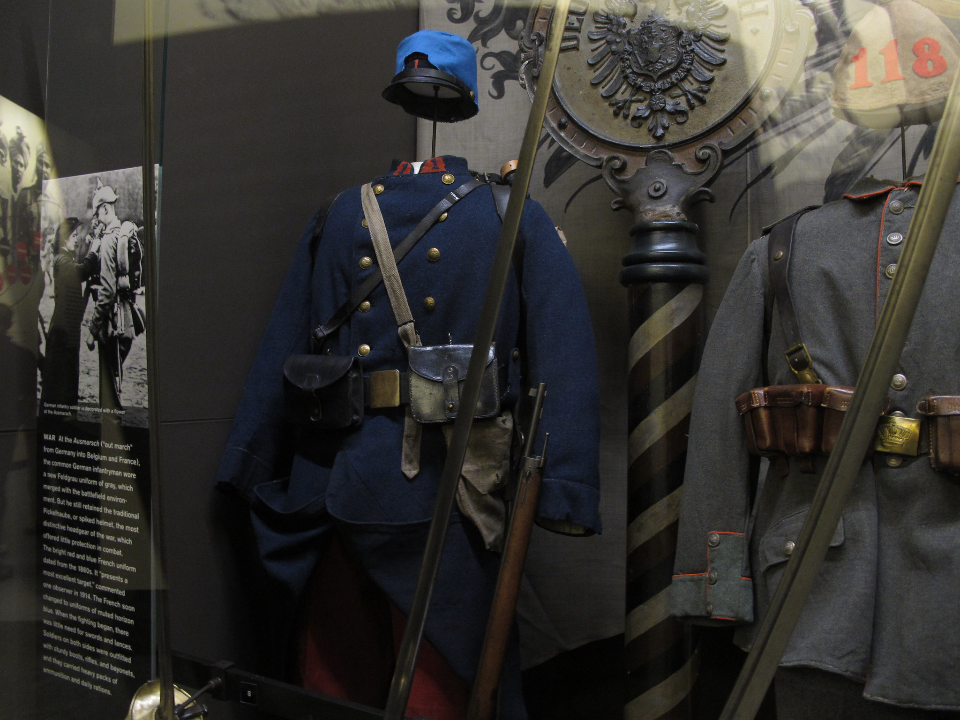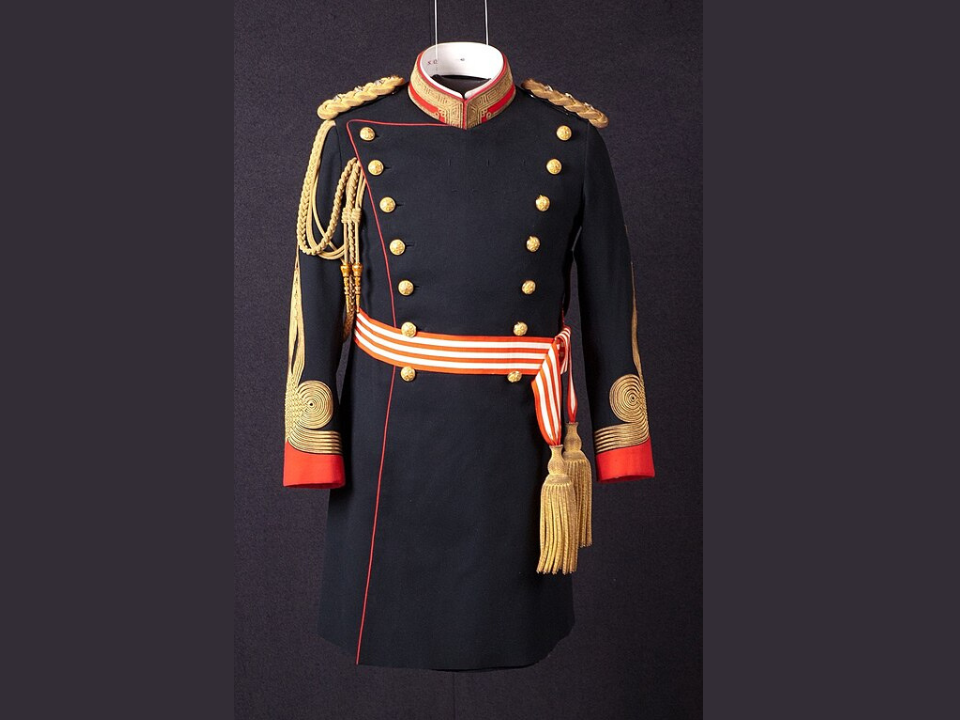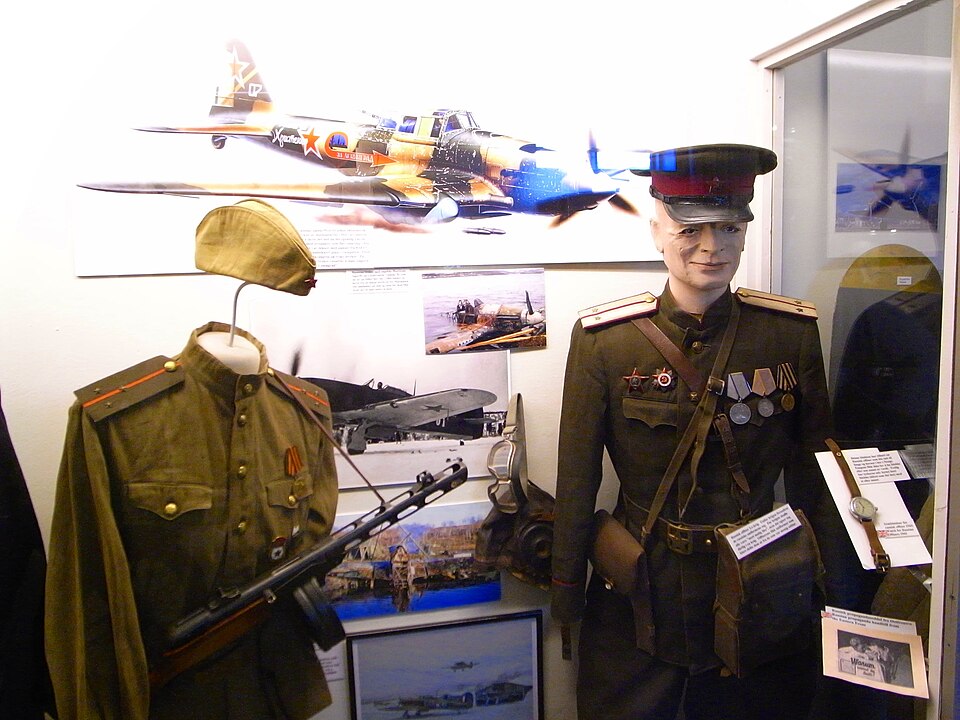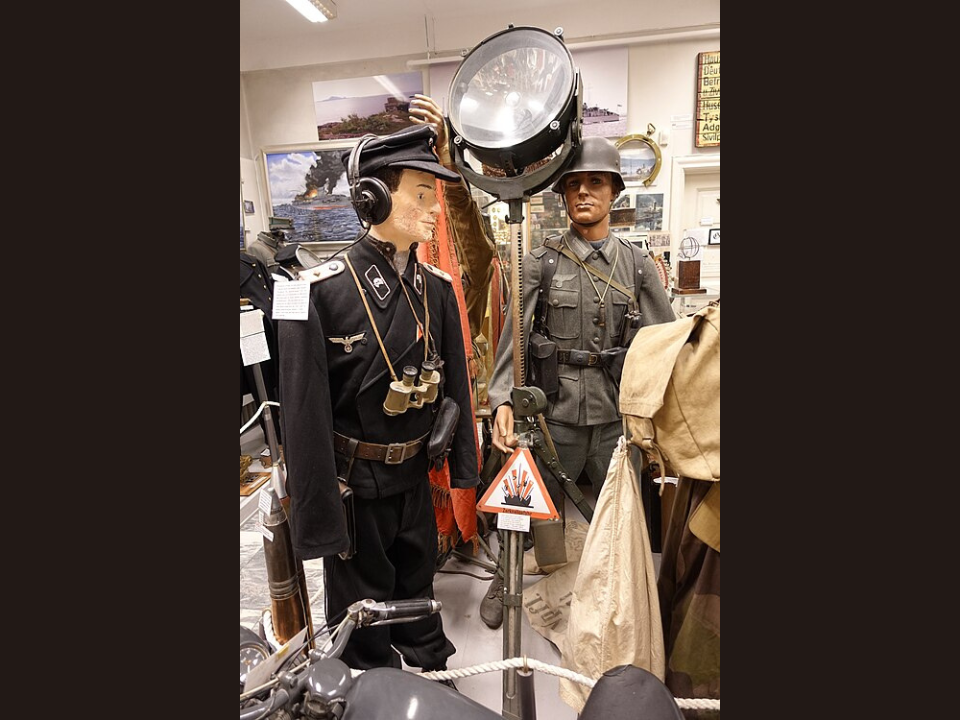10 Historic Military Uniforms From the 1900s Now Displayed in Museums
Military uniforms have always played a key role in defining the strength and identity of a nation’s armed forces. From the highly detailed officer uniforms of the early 1900s to the practical combat attire of soldiers, these garments reflect both the history and purpose of the military. Many of these uniforms have found a place in museums, where they serve as tangible connections to the past. Visitors can explore the evolution of design and the unique stories behind each piece. These garments also tell us about the technological advancements in warfare and the shifting cultural attitudes toward soldiers and their roles.
This post may contain affiliate links, which helps keep this content free. Please read our disclosure for more info.
German Imperial Army Officer’s Tunic

This uniform belonged to an officer of the German Empire during the early stages of World War I, showcasing the detailed design and high standards of military dress from the period. The tunic, crafted from wool, is in a field-grey colour with brass buttons and red‑trimmed collar and cuffs, signifying the officer’s rank. The high-quality tailoring, which includes distinctive piping and carefully structured seams, is a testament to the military’s emphasis on discipline and precision during the era.
In a museum display, it is often presented with other historical military artefacts to help explain the aesthetic and functional choices behind this uniform. Such a uniform, given its historical significance and condition, is valued at approximately $3,000. This price reflects the rarity and preservation of the tunic, as uniforms from this era often show signs of damage or modification after World War I.
British Army Service Dress Uniform

This uniform represents the British Army’s transition to khaki service dress during World War I. The jacket and trousers are made from a durable wool blend in khaki, designed for practicality rather than the brightly coloured uniforms used previously. The museum display often includes details about how these uniforms were intended to be both functional and inconspicuous, offering protection against the harsh conditions of trench warfare. Along with the uniform, visitors can view the insignia, which helped identify rank and regiment, reflecting the structure of the British Army at the time.
Comparable uniforms from this era are valued around $2,500, with prices fluctuating based on condition and authenticity. The transition from more ceremonial uniforms to these service versions has become an important historical shift, adding to its appeal in collections.
French Army Horizon Blue Enlisted Dress Uniform

The French Army’s distinctive “horizon blue” uniform was introduced during World War I to provide soldiers with a less visible appearance on the battlefield. The color, which had a slight bluish tint, was designed to blend with the French sky, making soldiers harder to spot by enemy forces. Museum displays of this uniform often pair it with explanations of the challenges the French military faced, including the need for innovation in both technology and uniforms. The tunic and trousers are well-preserved, showcasing the lightweight, practical nature required for warfare in the trenches.
Such a uniform, given its significance in military history and rarity, is valued at $4,000. The preservation of the color and integrity of the uniform adds to its value, making it a rare find for collectors and historians.
U.S. Army Army Service Uniform

This U.S. Army uniform dates back to the pre‑World War II era, showcasing the military’s preparation for the impending conflict. The Army Service Uniform is made from wool and features a dark blue tunic with shoulder epaulettes and a distinctive yellow piping along the seams. The uniform reflects the style worn by officers and non-commissioned officers during the 1930s and 1940s, before the uniform became more standardized during the war. In a museum display, this uniform is often positioned alongside other early wartime artifacts, helping to tell the story of
America’s military build‑up before the U.S. entered the war in 1941. A comparable uniform in excellent condition could be valued at around $3,500. Its preservation, along with the historical context it represents in terms of military readiness, contributes to its significance in collections and museum displays.
Japanese Imperial Army Dress Uniform

This uniform is from the early stages of Japan’s militaristic expansion before World War II, featuring the traditional imperial insignia and a distinctive khaki wool tunic. The uniform was worn by officers during the late 1930s and is showcased in museums to reflect Japan’s growing military influence in East Asia. The display often includes other elements of the officer’s gear, such as boots and a saber, to provide a full picture of the attire worn by those in command.
The tunic’s structure and decoration reflect the strict hierarchy and discipline within the Japanese military. Such a uniform in good condition, complete with its insignia, could fetch an estimated $5,000. The rarity of these uniforms, along with their historical association with pre-war Japan, adds to their desirability among collectors and museums alike.
Soviet Red Army Parade Tunic

This Soviet Red Army parade tunic is from the tail end of World War II, worn by officers during victory celebrations. The jacket is adorned with gold braid, large shoulder epaulets, and several medal ribbons that signify the soldier’s service during the conflict. The museum typically presents it to highlight the Soviet Union’s military prowess and the importance of parades and formal events after the war.
The display often includes a description of the Soviet Union’s military strategy and the role of the officer class during the post‑war years. The estimated value of a well-preserved parade uniform like this one is around $4,500. The gold braiding and overall condition of the uniform make it a highly valuable artifact for collectors and museums.
German Wehrmacht Officer Panzer Uniform

This uniform represents a high-ranking officer in the German Panzer division during World War II. The tunic features distinctive collar tabs and shoulder epaulettes that denote the officer’s rank and status within the armoured forces. In museum displays, this uniform is often paired with historical photographs or video footage of tank battles, showcasing the strategic importance of the German tank divisions.
The uniform’s design, with its tailored fit and specific insignia, highlights the efficiency and precision associated with the Panzer corps. A comparable piece from this era in good condition could be valued at around $6,000. The rarity of these uniforms, particularly from specialized divisions like the Panzer, contributes to their high market value.
British RAF Flying Suit

This flying suit was worn by an officer in the Royal Air Force during World War II and reflects the functional needs of pilots who flew dangerous missions during the war. The suit is made from a durable wool material, with a fitted design that allowed for maximum mobility in the cockpit. In a museum setting, this uniform is often displayed with other aviation artifacts, providing a full picture of the life of a wartime pilot. The uniform also includes the distinctive flight helmet, gloves, and boots that were used for protection and comfort in the air.
Comparable uniforms in well-preserved condition are valued around $2,200. The inclusion of additional flight gear and the rarity of these items make them a highly sought-after display in aviation history collections.
Canadian Expeditionary Force Service Dress

This uniform, worn by a Canadian soldier during World War I, is typical of the service dress issued to soldiers of the Canadian Expeditionary Force. The wool tunic is khaki, with patches that denote the soldier’s unit and rank. Museums highlight this uniform to show Canada’s significant contribution to the war effort, focusing on the role of Canadian forces in battles such as Vimy Ridge.
In museum condition, such a uniform might be valued at around $2,200. The uniqueness of Canadian military uniforms from World War I, paired with their excellent craftsmanship, makes this an attractive item for collectors and historians.
Spanish Civil War Republican Uniform

This uniform represents the Republican side of the Spanish Civil War and includes a service tunic, trousers, and a cap with the red and yellow Republican insignia. The outfit is simple, practical, and designed for the harsh conditions of war, made from wool and cotton blends. Museums present this uniform alongside items related to the internal conflict in Spain, highlighting the personal stories of the soldiers who wore it.
The uniform serves as a reminder of the bitter ideological divisions that tore Spain apart during the 1930s. A comparable uniform in excellent museum condition is valued at $2,000. The scarcity of uniforms from the Republican side, particularly those with clear historical provenance, adds to the value of such a piece.
This article originally appeared on Avocadu.
